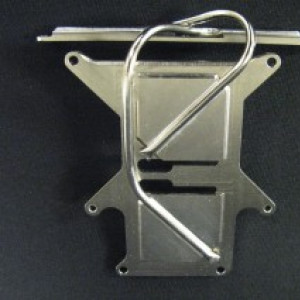| Advanced Cooling Technologies, Inc. |

| Registration Date | 7 Jan 2019 |
| Revision Date | 7 Jan 2019 |
| Share |
Renewable Energies Wind Energies
Wind Turbine LubricantCopper(II) oxide
CuO Nanoparticle /Nanopowder CAS Number : 1317-38-0At 0.8% by volume, the dispersion of nanoparticles increased the thermal conductivity of the turbine engine oil by as much as 4.5%. Furthermore, the stabilized thermal conductivity throughout the duration of the transient hot wire test indicates stability of the nanofluid. The heat transfer coefficient of the turbine engine oil nanofluid was evaluated in a custom made pumped loop and demonstrated a 5% increase in heat transfer coefficient; see Figure 2.
Advanced Cooling Technologies, Inc. has developed stabilized nanoparticle suspensions to improve the thermal properties of oil-based lubricants. Using the plasma enhanced chemical vapor deposition (PECVD) technique, ACT has encapsulated copper oxide nanoparticles with a stabilizing coating and dispersed the coated nanoparticles in polyester based turbine oils. The thermal conductivity of the respective nanofluids at various concentrations was evaluated by the transient hot wire method.
Preventing agglomeration, where the nanoparticles clump together, is a critical need in nanofluid development. Agglomeration is particularly unattractive in commercial applications as agglomerated solutions can erode heat exchanger surfaces and pumps, clog pipes causing increased pressure drop, and exhibit degraded thermal properties. One way to alter the inherent propensity of non-coated particles to aggregate is to alter the surface chemistry of the particles. Surfactants can temporarily solve this problem by blocking the surface chemical groups responsible for irreversible bonding between particles and by providing a steric layer of repulsion. However, surfactants tend to degrade at elevated temperatures and form non-permanent bonds with the particle surfaces.